Food of Japan: Learn and Enjoy
KIYOKAWA since 1874
Time-Honored Shops - Japan’s Hidden Treasures by Mr. Shoku-iku, Yukio Hattori Series
2016.05.01
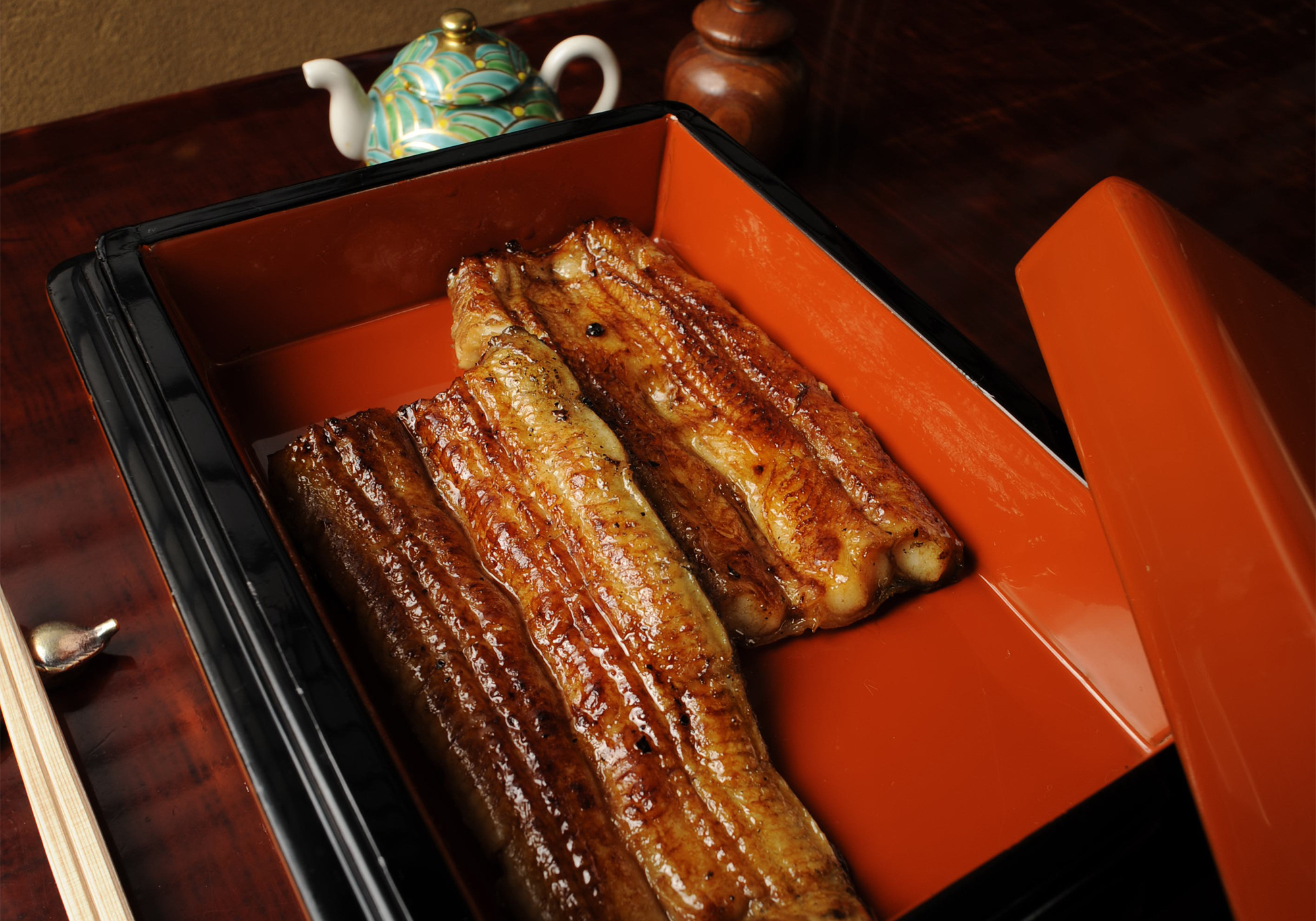
A prix-fixe meal of broiled eel, rice, soup, pickles, and fruit (¥7,000) is served in the second-floor dining rooms. Downstairs, the boxed unaju, or eel over rice, is ¥3,000 and up.
text by Michiko Watanabe / photographs by Toshio Sugiura / English text by Susan Rogers Chikuba
Yoshie Watanabe, the fourth-generation owner of this lovely eel restaurant, keeps a 138-year-old recipe and an ever-popular food tradition alive, despite drastic changes in supply. In the Nihonbashi Koamicho neighborhood of Tokyo, enjoy a taste of authentic Kanto-style broiled eel in a relaxed residential setting from another time.
Broiled Eel, as It's Meant to Be
Many customers are surprised to find a courtyard on our second floor. In the summertime it’s nice to open the sliding doors and catch the cross breezes from the garden. The building dates back to the late 1920s or so, and the carpentry of the day shows in the tokonoma alcoves, the unsquared columns, the beams and rails with their bark intact, and the ceiling fashioned from Yakushima cedar with its richly patterned grain.
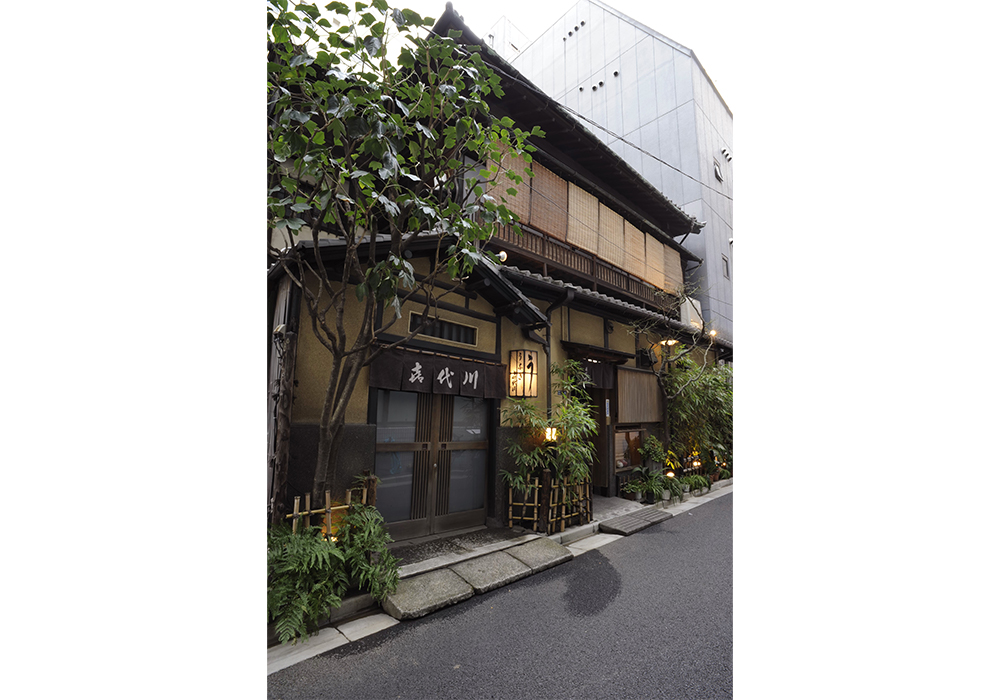
Though hemmed in by larger, modern buildings, Kiyokawa's storefront retains the charm of decades past. The left entrance leads to the tatami-mat rooms on the second floor, the right entrance to table seating on the first floor.
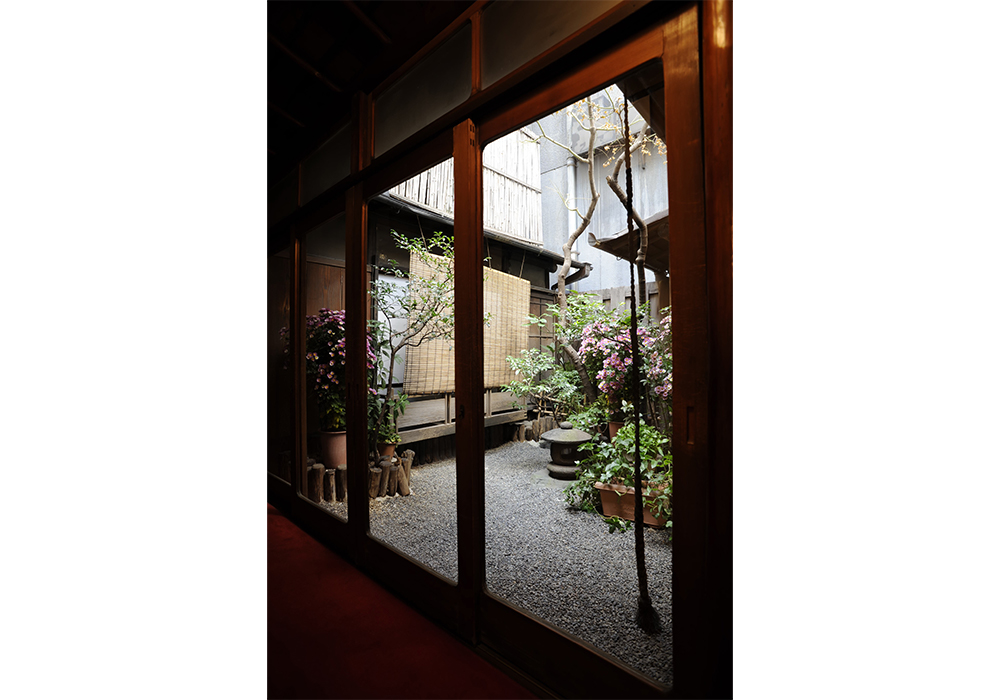
Second-floor diners are treated to garden views.
Today we offer table seating on the first floor, in keeping with the times, but originally there was only private seating in tatami-mat rooms on both floors. We’re taking steps to add the option of table seating on the second floor as well.
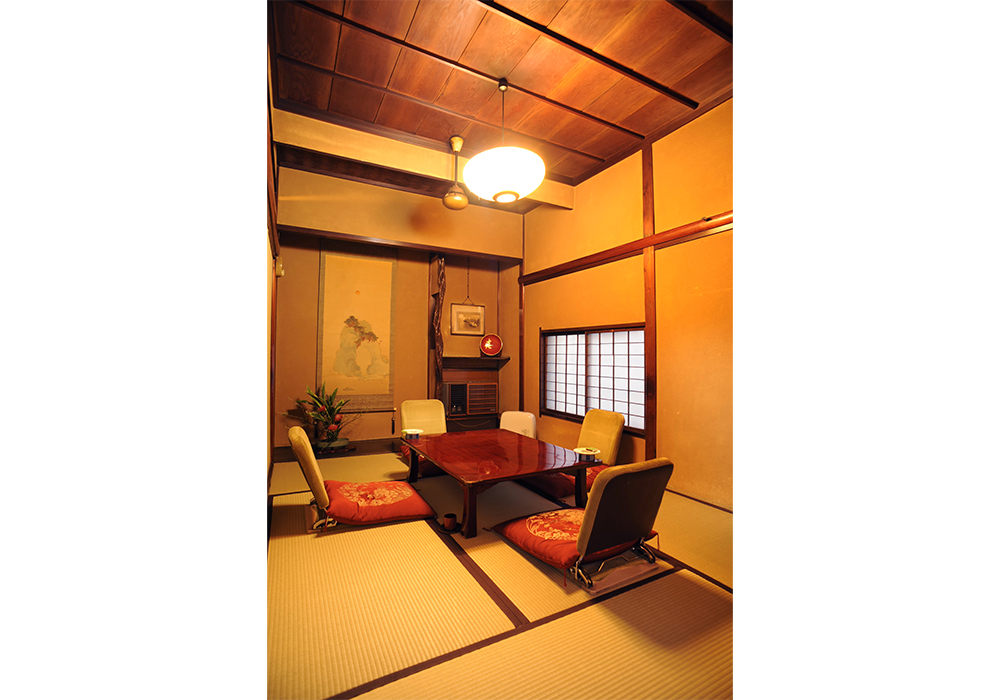
The five private rooms are designed in traditional Japanese fashion.
The lacquered tableware we use is a two-tiered set known as douko. The bottom half, formerly made of copper but now of stainless steel, is filled with hot water to keep the food warm. Like the woodwork of the building itself, it seems to me another one of those ways in which people in the old days brought clever and stylish designs to their everyday surroundings.
There has been a lot of coverage in the news about the decline in eel catches. The drop in freshwater hauls has impacted farmraised harvests as well, since young wild eel are used for breeding. Though eel has been part of Japan’s food culture for centuries, it’s a real struggle to secure a steady supply.
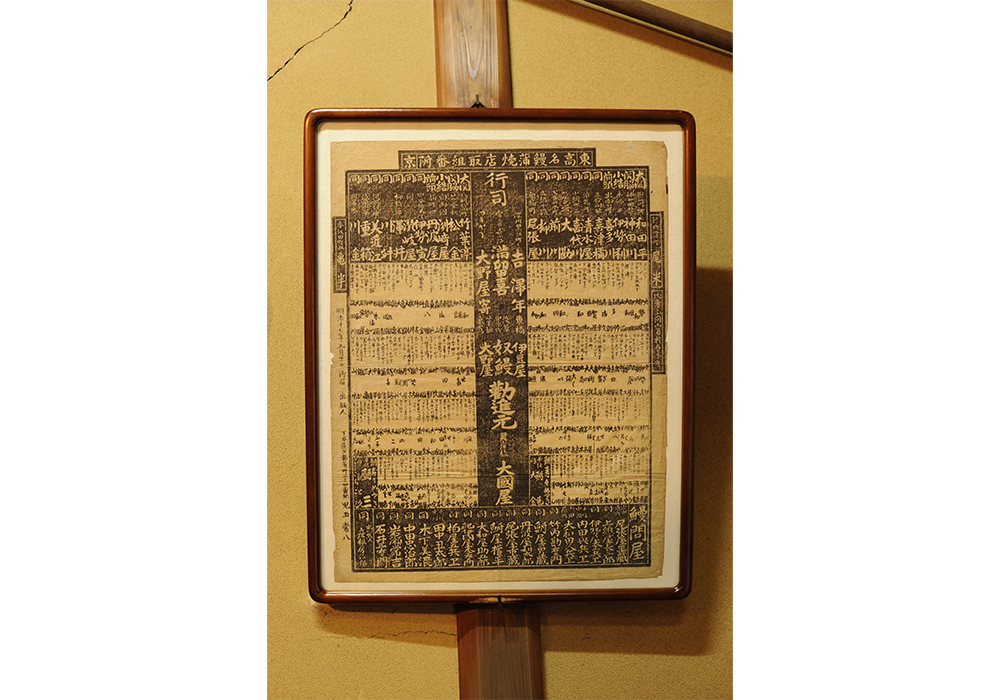
An 1884 ranking of Tokyo's best eel restaurants, humorously modeled after the Sumo ranking sheet, is also on display.
We follow the Kanto style of filleting and broiling the eel. The unseasoned fillets are first grilled, then steamed. Extra care is taken with the steaming—not enough, and the flesh will be tough; too much, and it will fall off the skewers when broiled with sauce prior to serving. This final step is critical, too—if done properly the eel should literally melt in the mouth.

A letter penned by educator Yukichi Fukuzawa (1834–1901) and addressed to the shop's owner speaks to Kiyokawa's long history.
We use high-grade Kishu oak charcoal, and our unsweetened sauce, made from a recipe handed down over the generations, suits the hearty shitamachi spirit of old downtown Tokyo. The saucepot was among the first things carried out to safety after the Great Kanto Earthquake of 1923! Served with rice and my homemade pickles, our eel is a healthy dish and a tradition we hope you’ll enjoy.
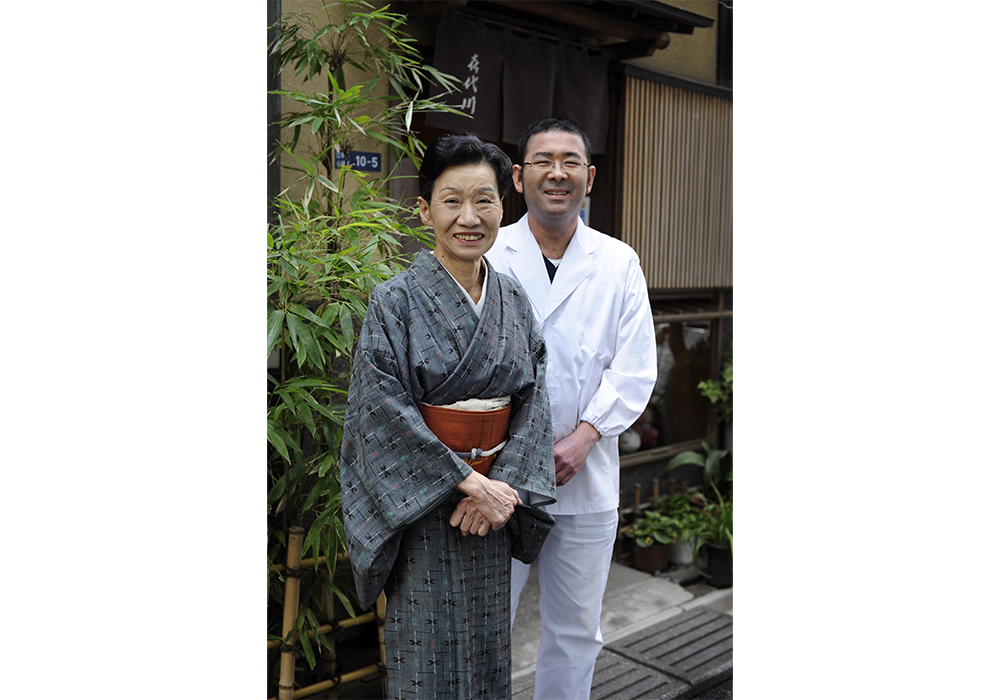
Fourth-generation owner Yoshie Watanabe with her son Masahiro, who mans the kitchen.
◎Kiyokawa
Nihonbashi Koamicho 10-5, Chuo-ku, Tokyo
☎03-3666-3197
Open Mondays through Saturdays from 11 a.m. to 2 p.m. and from 5 to 8 p.m; closed holidays.
Five minutes on foot from Tokyo Metro Kayabacho Station.









